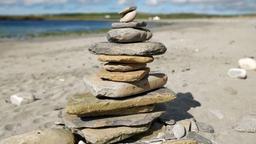
Rocks!
Quiz by Rachael Zyla
Feel free to use or edit a copy
includes Teacher and Student dashboards
Measure skillsfrom any curriculum
Measure skills
from any curriculum
Tag the questions with any skills you have. Your dashboard will track each student's mastery of each skill.
With a free account, teachers can
- edit the questions
- save a copy for later
- start a class game
- automatically assign follow-up activities based on students’ scores
- assign as homework
- share a link with colleagues
- print as a bubble sheet
20 questions
Show answers
- Q1What rocks are formed when rock buried deep in the earth changes without melting or weathering?MineralsMetamorphicIgneousSedimentary300s
- Q2If you found a rock with a fossil in it, it is most likely what type of rock?MetamorphicIgneousIt could be any typeSedimentary300s
- Q3Where would you find magma?Location BAll of the aboveLocation ALocation C300s
- Q4Which type of igneous rock cools slower, resulting in larger mineral crystals?ExtrusiveIntrusiveInternalExternal300s
- Q5Where would you find igneous rocks with smaller mineral crystals?Location A and BLocation A and CAll locationsLocation B and C300s
- Q6Where would metamorphic rocks be most likely to form?At the bottom of a lakeIn a lava flowAt the tops of mountainsNear tectonic plate boundaries300s
- Q7Weathering, compacting, and cementing are processes that formmetamorphic rockssedimentary rocksigneous rocks300s
- Q8What term is used to describe how sediments are carried to another place?CementationErosionCompactionWeathering300s
- Q9Sedimentary rocks often form horizontal strata as pictured here. What are strata?LayersCrystalsFossilsMineral grains300s
- Q10In the Paleozoic Era, the swamp plants were buried and solidified, eventually forming coal. What kind of sedimentary rock is coal?ClasticOrganicChemicalFoliated300s
- Q11What best describes the process happening at 1?WeatheringHeat and PressureCooling and CrystallizingMelting300s
- Q12What best describes the processes happening at 3?MeltingCooling and CrystallizingWeathering and ErosionHeat and Pressure300s
- Q13What kind of rocks turn into sedimentary rocks?SedimentaryAll typesMetamorphicIgneous300s
- Q14What type of metamorphic rock is pictured here?ClasticFoliatedStratifiedNonfoliated300s
- Q15Sandstone forms when sand is compacted and cemented together. What type of sedimentary rock is sandstone?ClasticFoliatedChemicalOrganic300s